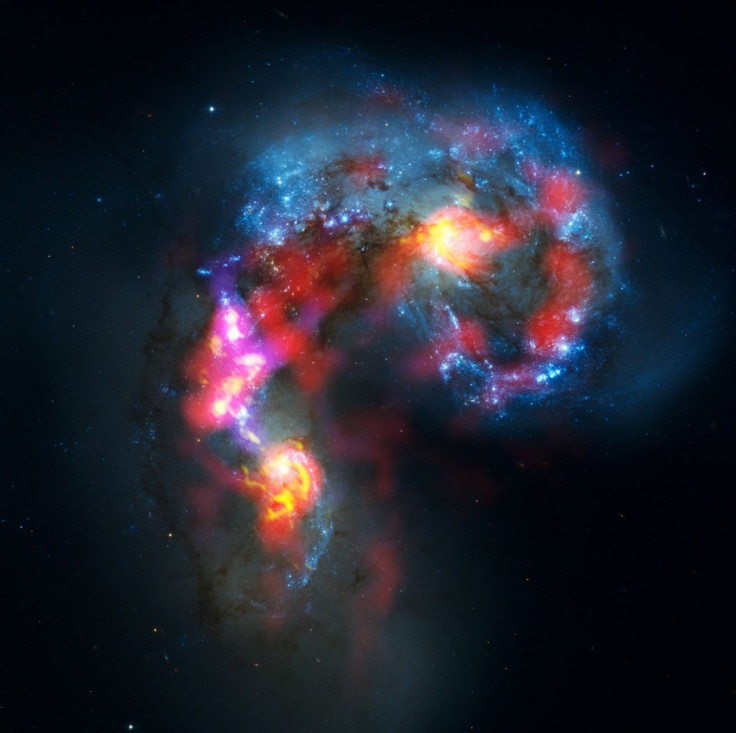ALMA Gets Down to Business, Releases First Image

The Atacama Large Millimeter/submillimeter Array (ALMA), the most complex ground-based astronomy observatory, is now open for astronomers, and the first picture from the under-construction telescope has been released.
The huge observatory located in northern Chile, observes the universe in light with millimeter and sub-millimeter wavelengths, roughly one thousand times longer than visible-light wavelengths. Using these longer wavelengths allows astronomers to study extremely cold objects in space - such as the dense clouds of cosmic dust and gas from which stars and planets form - as well as very distant objects in the early universe.
Thousands of scientists from around the world have competed to be among the first few researchers to explore some of the darkest, coldest, furthest, and most hidden secrets of the cosmos with this new astronomical tool.
The first image published from ALMA is of the Antennae Galaxies.
A statement from European Southern Observatory (ESO) explaining the image said: The Antennae Galaxies are a pair of colliding galaxies with dramatically distorted shapes. While visible light shows the stars in the galaxies, ALMA's view reveals something that cannot be seen in visible light -- the clouds of dense cold gas from which new stars form.
Even in this very early phase ALMA already outperforms all other submillimetre arrays. Reaching this milestone is a tribute to the impressive efforts of the many scientists and engineers in the ALMA partner regions around the world who made it possible, said Tim de Zeeuw, Director General of ESO, the European partner in ALMA.
Massive concentrations of gas are found not only in the hearts of the two galaxies but also in the chaotic region where they are colliding. Here, the total amount of gas is billions of times the mass of our Sun - a rich reservoir of material for future generations of stars.
The ALMA team has been busy testing the observatory's system over the past few months, in preparation for the first round of scientific observations, known as Early Science. ALMA could accept only about a hundred or so projects for this first nine-month phase of Early Science.
Currently, one-third of ALMA's eventual 66 radio antennas set up at a distance of 125 meters rather than the maximum 16 kilometers, make up the growing array of them on the Chajnantor plateau in northern Chile, at an elevation of 5,000 meters.
Even under construction, ALMA has become the best telescope of its kind - as reflected by the extraordinary number of astronomers who requested time to observe with ALMA, says the ESO.
© Copyright IBTimes 2024. All rights reserved.





















